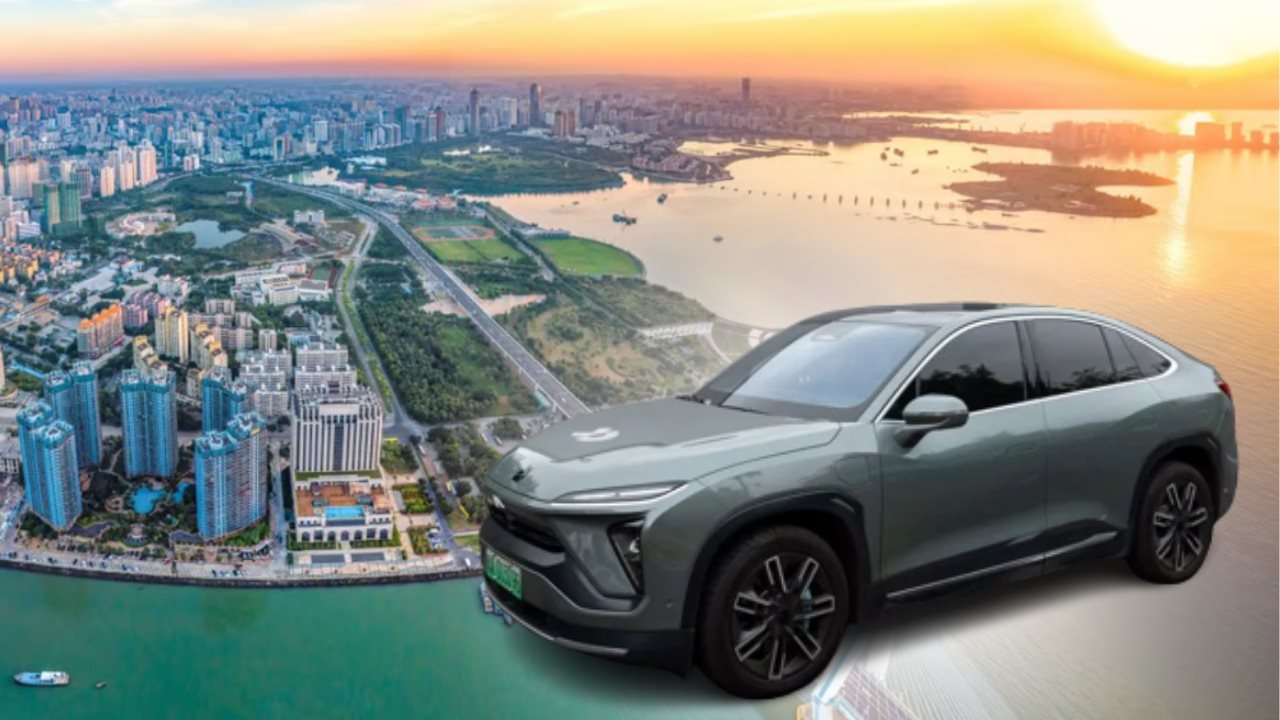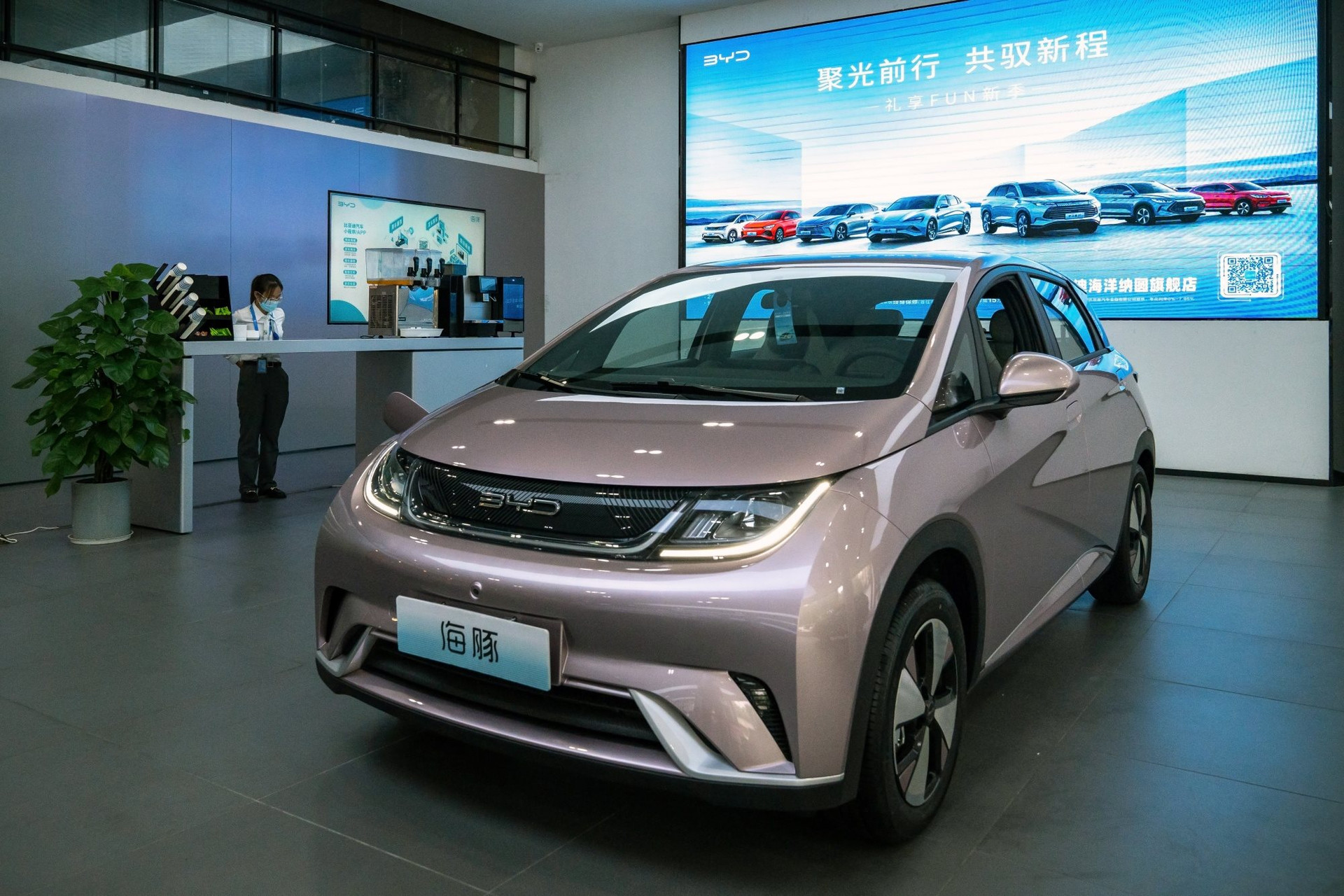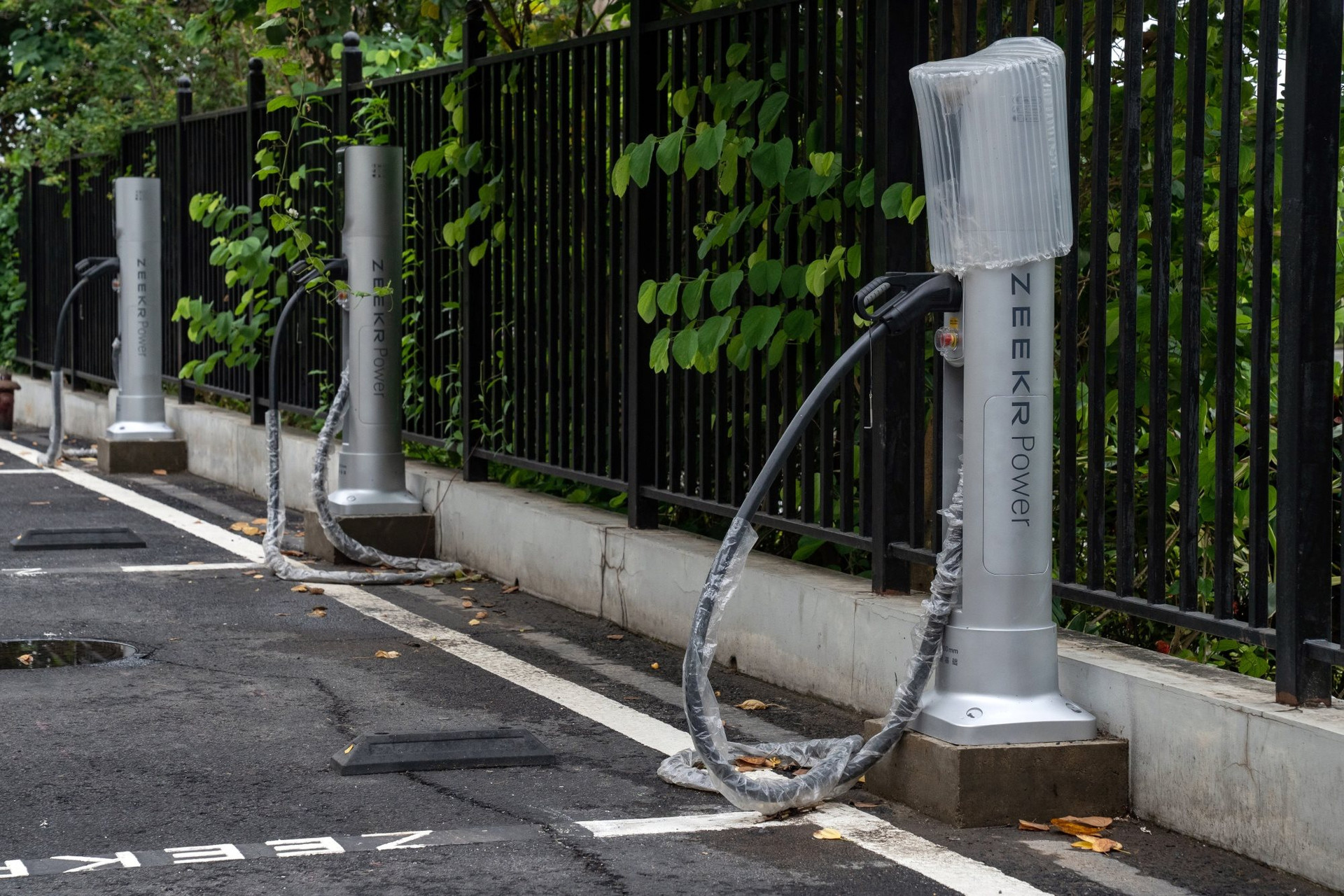Electric car island ahead of the future in China: Taxi, 100% electric bus, not afraid of running out of battery with 75,000 charging stations, people nod to buy electric cars without hesitation
- Tram Ho

Any concerns about the range of trams can be put aside when arriving on Hainan Island.
With more than 75,000 charging stations, electric vehicle owners in urban areas on this southern Chinese island will not be afraid of running out of batteries, as there are charging stations every 1.6km – 3.2km.
The massive network is part of the provincial government’s plan to end the sale of fossil fuel-powered cars by 2030, so that 45% of cars on the island are electric and hybrid (electric hybrid). and gasoline).
It is the first and only place in China to set such a goal. If Hainan is successful, all other regions of China can follow this blueprint for full electric vehicle use in the future.

A Nio car at a battery change station in Haikou, Hainan, China. Photo: Bloomberg
Hainan Island has certain advantages when deploying electric vehicles. The island is about the same size as Belgium, which means most of its 10 million residents only travel short distances.
The mild climate helps prolong battery life, unlike Beijing, which has periods of sub-zero temperatures in the winter. Regional governments have also poured millions of yuan into subsidizing electric vehicle sales.
All of this has boosted Hainan province’s largest island to become the country’s second-highest electric vehicle penetration by 2022, accounting for 42% of new car sales, just behind financial hub Shanghai. Hai (48%). All of Hainan’s taxis and trams are electric.
When a Bloomberg reporter visited Hainan’s capital, Haikou, almost every parking space had an electric vehicle charging post. New battery technology is also being rolled out. Car company Nio Inc. launched a third-generation battery replacement station in Haikou, from which a new battery can be replaced in less than 5 minutes. The automaker plans to build 1,000 more battery replacement stations and 10,000 chargers.
Mr. Chen Yeren is a resident living in Hainan. The first time he knew about the car company BYD Co. was when he was offered a job at a car dealership after graduating in 2018. For the first two years, he used a petrol car and was still confused about electric cars. In the end, in 2020, Mr. Chen decided to buy a BYD Han, as battery technology developed to help the car travel longer. Many of his friends also became interested in electric cars.
At work, he said it does not need to convince customers as much as before for them to decide to buy an electric car. “ I think the 2030 goal will not put pressure on people. Consumers here now consider electric cars to be a better choice when it comes to buying new cars ,” he shared.

A BYD showroom in Haikou. Image
China is considering Hainan as a test model for developing the nationwide electric vehicle industry. Hainan officials were invited to other provinces to share experiences.
The next challenge will be converting larger vehicles to electric. Heavy vehicles will not save as much money as cars, because the cost of charging them will be more expensive.
China has not yet banned gasoline-powered cars. Hainan is a small island dependent on tourism, but other parts of the country are not, according to Yale Zhang director of consulting firm Automotive Foresight.
In addition to China, many other countries and territories are also making rapid progress in phasing out petrol cars. Norway, a country of 5.5 million people, is preparing to ban fossil fuel vehicle sales by 2025. In April, more than 83% of new car sales in the country were electric.
The UK has said it will also stop selling petrol and diesel cars and trucks by 2030. Meanwhile, Canada and seven US states, such as California and Maryland, have set a deadline of 2035.

Charging post in the parking area. Photo: Bloomberg
Strategy director James Chao of consulting firm IScann Group said Hainan’s task would not be as difficult as in other countries. “ The main driver of this program is that the average price of an electric vehicle in China is much lower than in the rest of the world ,” he said.
“ Affordability for electric vehicles is an issue for Europe and the US, but in China it is no longer a barrier,” he added. This makes the chances of success of stopping gas car sales much greater .”
Refer to Bloomberg
Source : Genk
